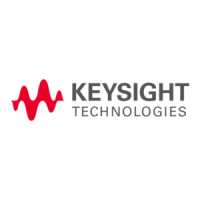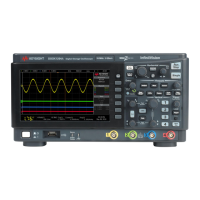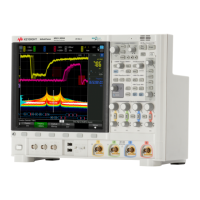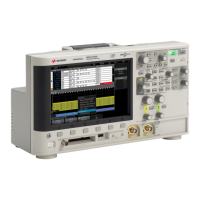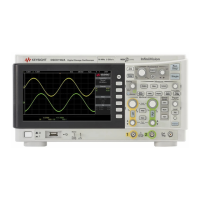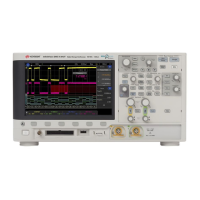1139
Keysight InfiniiVision 4000 X-Series Oscilloscopes
Programmer's Guide
33 :TRIGger Commands
Control the trigger modes and parameters for each trigger type. See:
• "Introduction to :TRIGger Commands" on page 1139
• "General :TRIGger Commands" on page 1141
• ":TRIGger:DELay Commands" on page 1151
• ":TRIGger:EBURst Commands" on page 1158
• ":TRIGger[:EDGE] Commands" on page 1163
• ":TRIGger:GLITch Commands" on page 1170 (Pulse Width trigger)
• ":TRIGger:NFC Commands" on page 1179
• ":TRIGger:OR Commands" on page 1189
• ":TRIGger:PATTern Commands" on page 1191
• ":TRIGger:RUNT Commands" on page 1199
• ":TRIGger:SHOLd Commands" on page 1204
• ":TRIGger:TRANsition Commands" on page 1210
• ":TRIGger:TV Commands" on page 1215
• ":TRIGger:ZONE Commands" on page 1225
Introduction to
:TRIGger
Commands
The commands in the TRIGger subsystem define the conditions for an internal
trigger. Many of these commands are valid in multiple trigger modes.
The default trigger mode is :EDGE.
The trigger subsystem controls the trigger sweep mode and the trigger
specification. The trigger sweep (see ":TRIGger:SWEep" on page 1150) can be
AUTO or NORMal.
• NORMal mode — displays a waveform only if a trigger signal is present and the
trigger conditions are met. Otherwise the oscilloscope does not trigger and the
display is not updated. This mode is useful for low-repetitive-rate signals.
• AUTO trigger mode — generates an artificial trigger event if the trigger
specification is not satisfied within a preset time, acquires unsynchronized data
and displays it.

